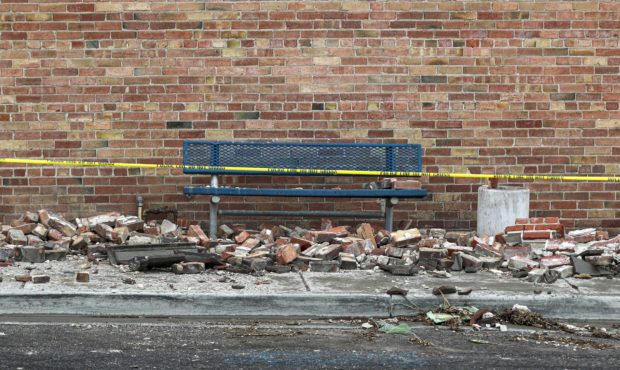Dangerously high temperatures to hit Wasatch Front
Jul 12, 2022, 10:00 AM | Updated: Jul 13, 2022, 2:01 pm

Much of northern Utah will be hit with triple-digit temperatures this week. Photo: Canva
Dangerously hot conditions with high temperatures in the triple digits are expected over parts of Texas and Utah Tuesday. Heavy to excessive rainfall is becoming more likely mid to late week along the central Gulf Coast which could lead to areas of flooding. pic.twitter.com/2xvYlmx1sx
— National Weather Service (@NWS) July 12, 2022
Staying safe in the heat
According to the NWS, heat is one of the leading weather-related killers in the United States, resulting in hundreds of fatalities each year. The NWS urged people to be aware of signs of heat-related illnesses.
In extremely hot and humid weather, the ability of a body to cool itself is challenged. The NWS warned that heat-related illnesses can occur with even a short period of exposure.
Heat-related illnesses include heat exhaustion and heat stroke.
The Centers for Disease Control and Prevention website provides a list of warning signs and symptoms of heat illness and recommended first aid steps.
Heat cramps may be the first sign of heat-related illness, and may lead to heat exhaustion or stroke.
Heat cramp symptoms:
- Painful muscle cramps and spasms usually in the legs and abdomen and Heavy sweating.
- First Aid: Apply firm pressure on cramping muscles or gently massage to relieve spasms. Give sips of water unless the person complains of nausea, then stop giving water.
- Seek immediate medical attention if cramps last longer than 1 hour.
Heat exhaustion symptoms:
- Heavy sweating, weakness or tiredness, cool, pale, clammy skin; fast, weak pulse, muscle cramps, dizziness, nausea or vomiting, headache, fainting,
- First Aid: Move person to a cooler environment, preferably a well air-conditioned room. Loosen clothing. Apply cool, wet cloths or have person sit in a cool bath. Offer sips of water.
- Seek immediate medical attention if the person vomits, symptoms worsen or last longer than 1 hour
Heat stroke symptoms:
- Throbbing headache, confusion, nausea, dizziness, body temperature above 103°F. Hot, red, dry or damp skin, rapid and strong pulse, fainting, loss of consciousness.
- First Aid: Call 911 or get the victim to a hospital immediately.
- Heat stroke is a severe medical emergency. Delay can be fatal. Move the victim to a cooler, preferably air-conditioned, environment. Reduce body temperature with cool cloths or bath.
- Use fan if heat index temperatures are below the high 90s. A fan can make you hotter at higher temperatures. Do NOT give fluids.
- Using a fan to blow air in someone’s direction may actually make them hotter if heat index temperatures are above the 90s.
The NWS also advised to be aware of groups that are vulnerable such:
- Young children and infants who are particularly vulnerable to heat-related illness and death.
- Older adults — particularly those with pre existing diseases, take certain medications, are living alone or with limited mobility who are exposed to extreme heat can experience multiple adverse effects.
- People with chronic medical conditions that are more likely to have a serious health problem during a heat wave than healthy people.
- Pregnant women are also at higher risk. Extreme heat events have been associated with adverse birth outcomes such as low birth weight, preterm birth, and infant mortality, as well as congenital cataracts.
For additional information visit weather.gov/safety/heat.
Kate Davis contributed to the reporting of this story.













